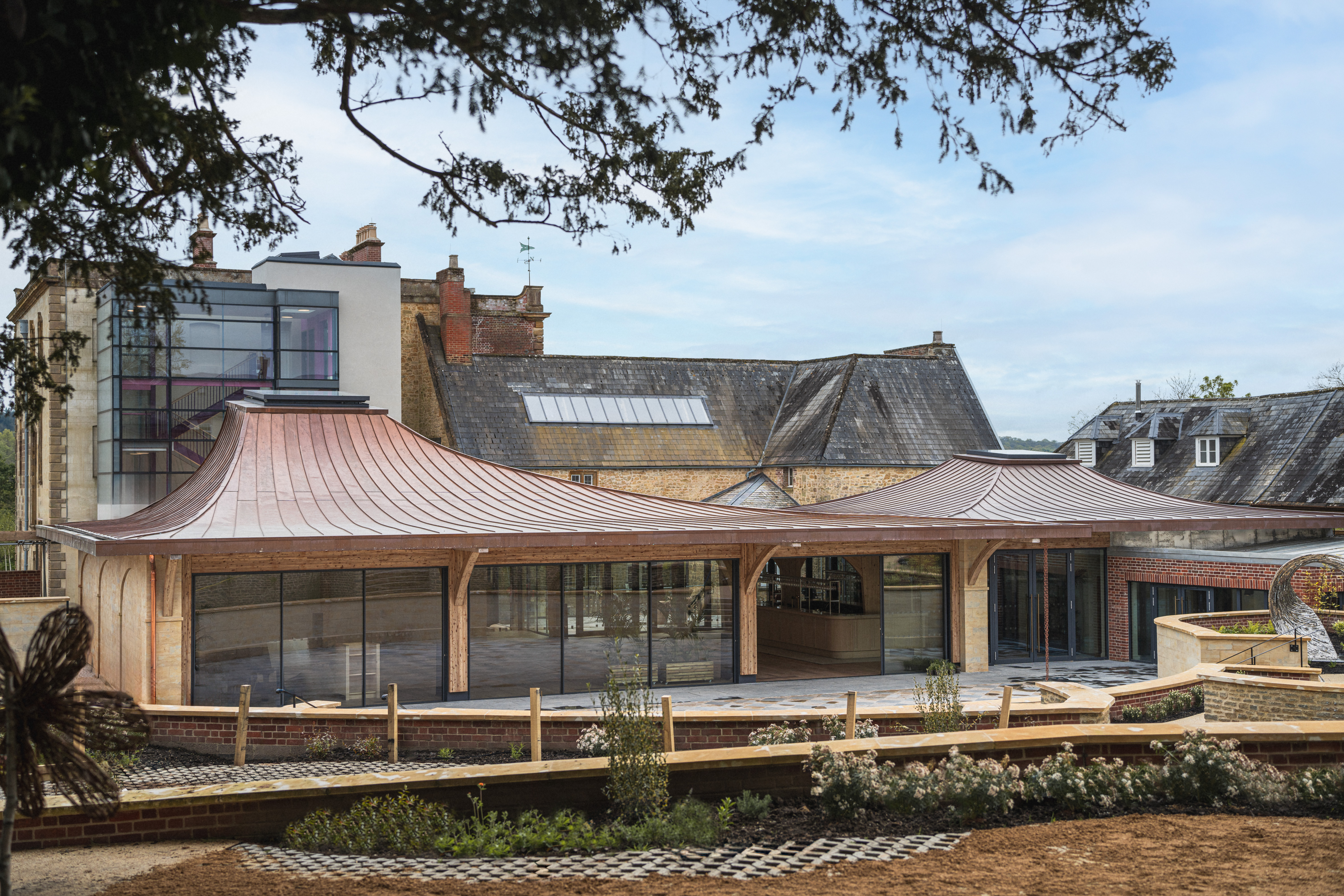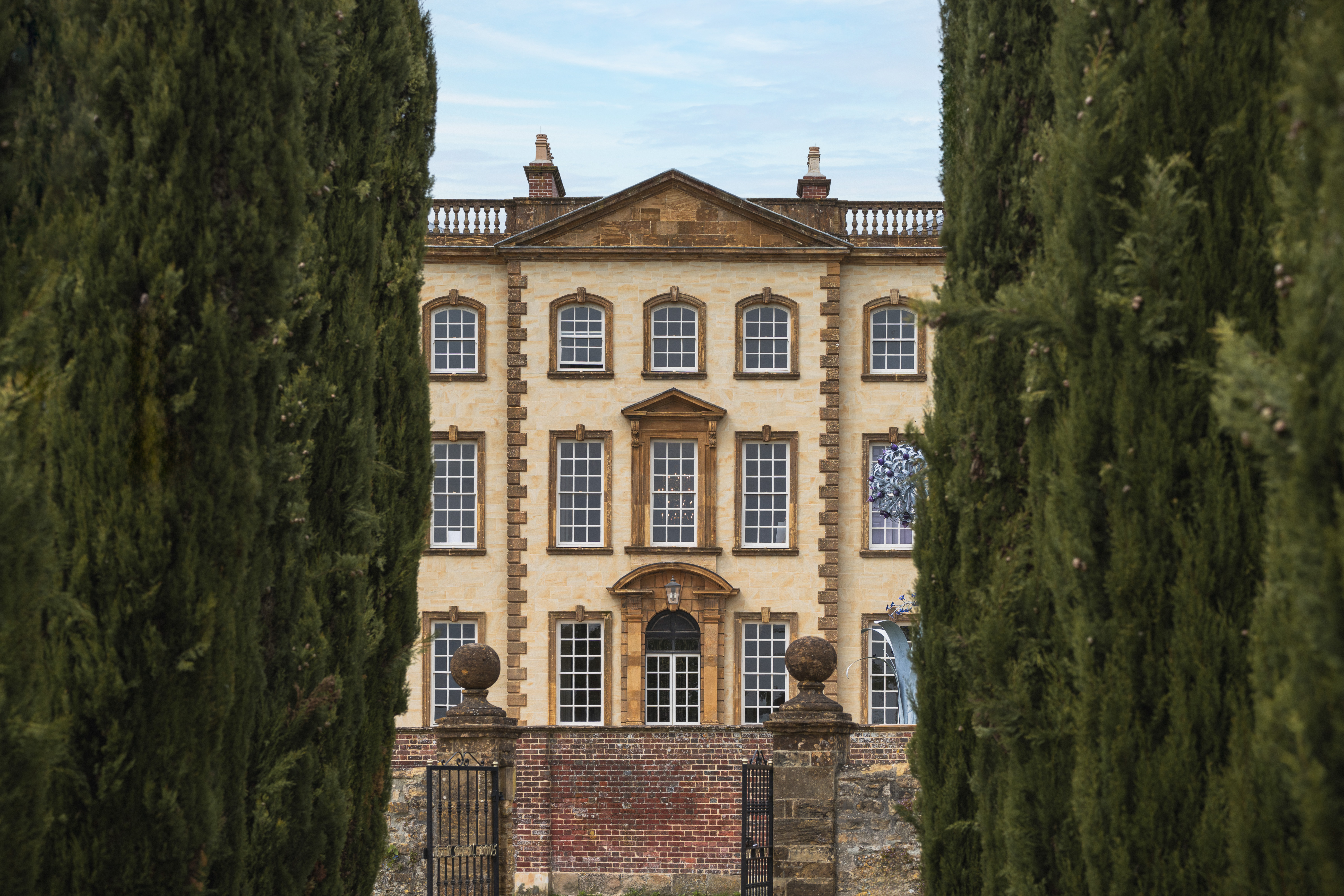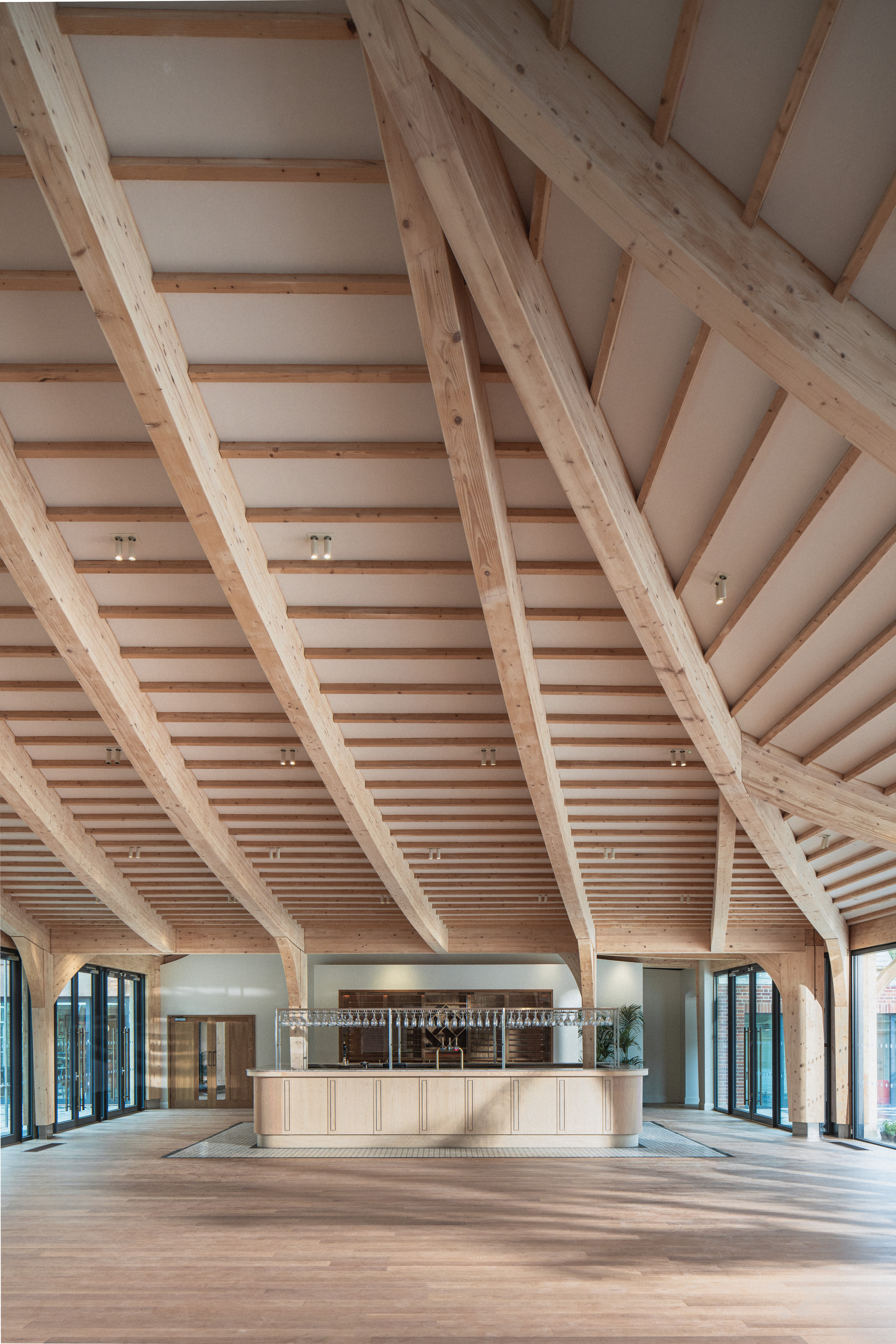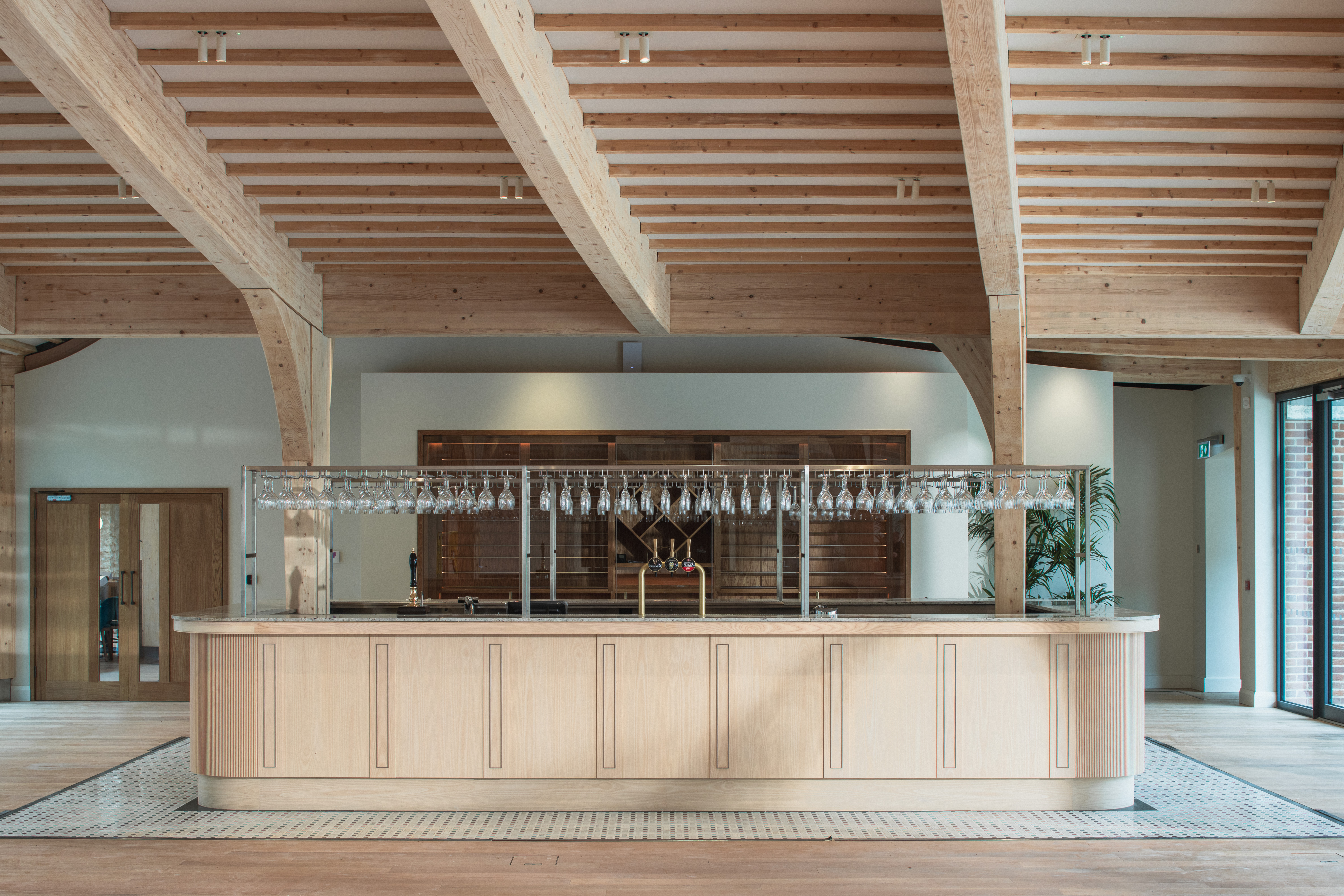
A landmark building in the market town of Sherborne in Dorset, on the road from London to Penzance, has found a new lease of life as an exciting admission-free arts centre thanks to local architects Spase. A legacy project by the late West Country beer and pub entrepreneur Michael Cannon, The Sherborne is the new home of not-for-profit organisation Dorset Visual Arts, and will host a programme of events designed to put the spotlight on the local creative scene.

Enter The Sherborne
Dating back to the 13th century, the Grade I-listed Sherborne House, an imposing private residence used as a girls’ school for six decades, had been empty since the 1990s. It was in a state of disrepair and dubbed a ‘heritage building at risk’ when Stefan Pitman, founder of Dorset-based architectural practice Spase, came on board in 2018 to help with plans to sensitively repurpose the building into a venue that would ‘inspire the community and beyond’.
‘This building is of such historical significance and has been a landmark in Sherborne for centuries – it even played host to Charles Dickens, who was a regular visitor in the 19th century,’ says Pitman, whose work spans everything from retrofitted period sites to biodiverse farms. Spase’s plans for the site included the meticulous renovation of the Georgian mansion and its medieval wing, as well as the construction of a striking new pavilion.

‘Preserving its historical integrity whilst ushering it into a new era for the town is a huge honour,’ he continues. ‘Aside from its status, what has made the work so interesting is that it combines several projects in one: creating the new pavilion, exterior landscaping and restoring the period wings and house. During our work we have uncovered many historical artefacts and features including the original Tudor kitchen, fireplaces, ovens and Victorian water chambers.’
Contrasting with these historical layers is the new, 6.7m-high, purpose-built pavilion, complete with air source heat pumps and rainwater recycling systems – a testament to Spase’s commitment to innovative and sustainable design. Connecting the main house to the garden, the bespoke curved structure is crafted from eco-conscious glulam (glued laminated timber) and formed of 17m pieces of laminated European spruce joined together with hidden steel plates and dowels, and topped with a copper roof with hand-cut tapered joints.

In keeping with the original vision for the project to celebrate the artistic talent of the South West, the team has worked predominantly with local experts such as Stonewood Builders and Buckland Timber. ‘We have also involved artisans from the area via SPAB (Society for Protection of Ancient Buildings) and referenced local architectural vernacular throughout our design, using sustainable materials in keeping with nearby historic buildings to ensure The Sherborne sits peacefully within its surroundings,’ explains Pitman.
London-based fine art and design studio Adam Ellis was tasked with creating bespoke wallpapers, while Sands & Randall undertook the painstaking restoration of the house’s most spectacular artwork, a staircase mural depicting a boar hunt scene from Greek mythology painted in the 1700s by Sir James Thornhill – a Dorset-born artist best known for painting the dome of St Paul’s Cathedral and the Painted Hall at the Royal Naval College in Greenwich.

As well as a gift shop and brasserie showcasing local produce, The Sherborne also features landscaped grounds dotted with botanical sculptures by award-winning contemporary blacksmith Jenny Pickford (from Cannon’s own art collection) and willow structures by Angela Morley. The venue’s inaugural programme includes an exhibition of the works of landscape painter Jeremy Gardiner, ‘Turning the Tide’, until October 2024, followed by Making Dorset, which aims to put the region’s craftspeople, designers and makers on the map.







